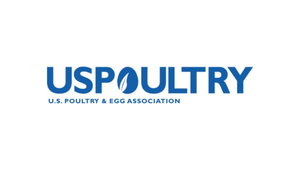Economic recovery is underway for ag sector as some commodity futures have returned to early-March levels.

Many economists are now talking more about a U-shaped recovery curve than a V-shaped curve from the sudden, unexpected reversal of fortune from the previously projected $3.1 billion increase in net farm income to a now 11% drop from those projections.
At its monthly meeting June 11, the Farm Credit Administration board received a quarterly report on economic issues affecting agriculture, together with an update on the financial condition and performance of the Farm Credit System (System) as of March 31, 2020. The U.S. economy appears to have turned the corner following its steep and rapid contraction following the COVID-19 outbreak.
FCA reported April's high unemployment rate edged down slightly in May, and weekly initial unemployment claims continue to decline. “Local economies have started to reopen, but the eventual economic rebound depends on the trajectory of the ongoing health crisis and consumer behavior,” FCA said.
Outlook
FCA’s updated noted crop returns continue to be under pressure this year because of plentiful supplies and expected strong production. The livestock sector has seen the most disruption during the crisis, but low corn prices have helped reduce feed expenses. Some commodity futures prices have returned to early March levels, except for hogs and corn that continue to struggle.
Commodity prices are rebounding somewhat as the food system adjusts and regains its footing. However, challenges remain with processing backlogs, continued cases of COVID-19 among farm and food processing workers, and uncertain demand prospects.
FCA’s outlook expects cow-calf margins for 2020 to hinge on calf prices this fall, supported by low corn prices and pasture conditions which are dry in parts of the Plains and West. Feedlots are weathering the backlog of cattle so returns are mixed. Hedged cattle are turning profits in June while unhedged animals are losing money.
Hog margins were negative for every week of April, with producers losing $20 per head. Breeding liquidation will reduce market hog supplies later this year, FCA noted.
Dairy margins deteriorated quickly with negative returns in April and May not seen since 2009 or 2012. Margins are expected to remain in the red through at least June. For broilers, prices for major cuts and whole birds have generated weak margins. A low feed cost environment benefits broiler integrators, FCA stated.”
In the wake of the global COVID-19 outbreak, export expectations have weakened, particularly for bulk commodities such as soybeans, cotton, corn, and wheat. While exports of meat, particularly pork, have held up well so far this year, demand questions remain because of persistent trade tensions despite the agreement signed with China earlier this year, FCA said.
COVID-19 impact
"Trying to figure out the true extent of COVID-19's impact is like staring into a deep, deep mist," said Association of Equipment Manufacturers Director of Market Intelligence Benjamin Duyck.
The COVID-19 crisis stifled a considerable amount of economic activity while also forcing changes in consumer behavior. A trickledown effect has reached virtually every corner of the ag industry — only the "trickle" has been more like a mudslide, AEM said.
On the supply side, immediate impacts have been a loss of marketing outlets, reduced processing capacity, labor supply restrictions, border restrictions and transportation issues. In the longer-term, supply side challenges are led by ongoing pricing pressures.
Take ethanol, for example. As the economy has contracted, so has fuel consumption. Ethanol producers have been hit hard. Futures prices were down 23% in mid-May. "That is naturally going to have impacts on demand for corn," said Dr. Robert Johansson, chief economist for the U.S. Department of Agriculture.
Like ethanol, corn futures prices have also fallen dramatically (19%). Several other commodities have been hit just as hard, if not harder:
Class IV and III Milk down 42% and 33%
Hogs now down 30% after bottoming out down almost 50%
Cotton now down 20% after bottoming out down 30%
Cattle now down 17% after bottoming out down 30%
Livestock processing plants have also been hit hard. Through May 6, beef slaughters were down 31% from a year ago, while pork slaughters were down 34%. Chicken slaughters fared far better, down 3%, largely due to the more "regional" nature of the poultry business.
On a positive note, several processing facilities that were forced to shut down have since reopened. USDA reported on June 9 that processing facilities are operating more than 95% of their average capacity compared to this time last year. In fact, beef facilities are operating at 98%, pork facilities are operating at 95%, and poultry facilities are operating at 98% of their capacity compared to the same time last year.
How fast they make up lost ground remains to be seen. But progress is progress, helping any economic recovery curve start to take shape.
"We still expect to see a year-over-year increase of beef, pork and broiler production in the U.S.," Johansson added. "Total meat production is expected to be up 3% to 108 billion pounds. We also anticipate a 2% increase in milk production to 222 billion pounds. Now, those volumes may fall. We have seen some significant disruptions at milk processing plants, as well as beef slaughter facilities. Pork plants have also faced some significant disruptions."
The ability of various elements of the supply chain to function "normally" will influence how quickly the broader agriculture industry can embark on a sustained path of recovery.
A tremendous amount of food production was geared toward the restaurant and grocery channels. When restaurants were effectively forced to close down around the country, the supply chain quickly backed up.
Dr. John Newton, chief economist for the American Farm Bureau Federation, noted, "What we immediately saw with the stay at home orders was a need to move some of these agricultural products originally consumed in the restaurant channel over to the grocery store channel," Newton said. "That created some supply chain issues. Quite frankly, some of the processing plants were not fabricated to package product in retail sizes. This is what created the first backlog in the supply chain."
Grocery stores ultimately saw a sales jump of 27% in March, while restaurants saw a 25% decline. However, the net effect was that fruit, vegetable and livestock producers began seeing less demand for their products.
Financing available
As of March 31, 2020, the Farm Credit System was safe and financially sound. “Portfolio loan quality remained largely unchanged since current events did not materially affect first quarter results. Strong quarterly earnings continued to support additional capital growth,” FCA said in its board report. The System also took actions to boost liquidity levels because of the volatility and uncertainty in the debt capital markets.
Todd Van Hoose, president and CEO of the Farm Credit Council, said the Farm Credit Council has most of its financing packages in place, and will continue to do what it can to support agriculture businesses. But when you put a pencil to it, it's hard to envision many businesses making any kind of profit this year.
"Without significant support from the federal government, we are going to continue to see great disruption out there in farm country," Van Hoose said.
About the Author(s)
You May Also Like





